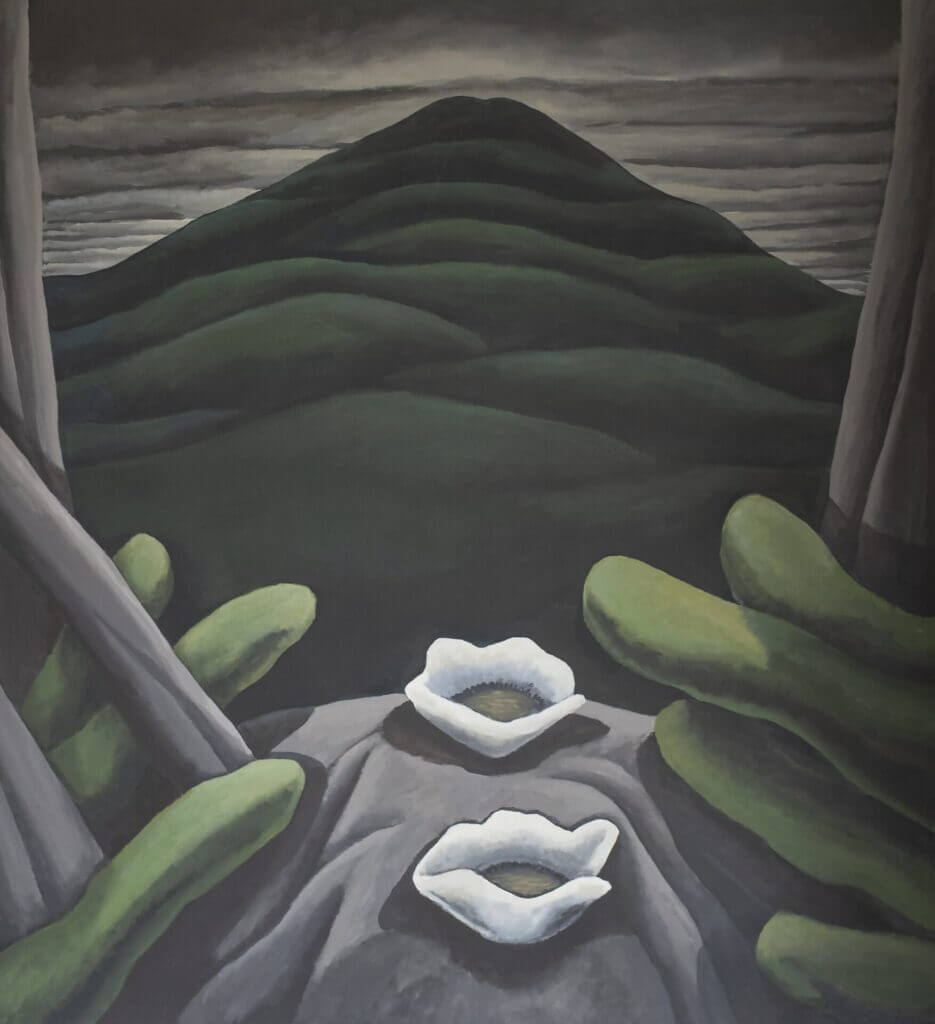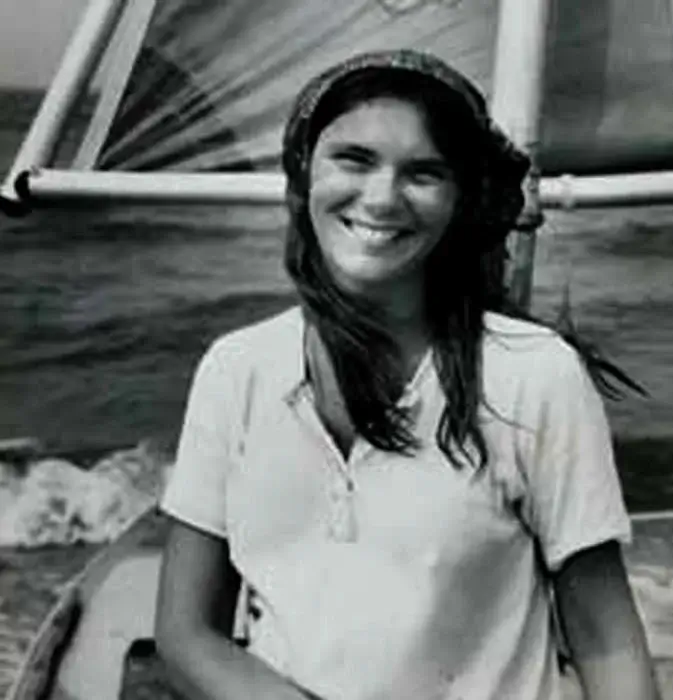Your currently viewing RAW Modern | Switch to RAW Contemporary
Lotus Mountain, 1972
Catalogue essay by Blanche Llewellyn
Mary Beth Edelson sustained a radical engagement with transforming the purpose of art throughout her lifetime. In the 1970s, she was a leading member of the first generation of feminist artists, placing her at the forefront of the ‘Women’s Liberation Movement’ in the United States.
A majority of her early 1970s work focused on the political and historical constraints that prohibit individuals, particularly women. She explored cross-cultural archetypes, often incorporating female icons into her work. During these years, Edelson also used her own body as both medium and material to document her politically altered awareness of her body.
“Lotus Mountain,” 1972, is a key work from a pivotal moment in her carrer – in the same year she was engaged in her epic parody of Leonardo da Vinci’s “The Last Supper” in which she notoriously replaced the faces of Jesus and his disciples with those of her friends and idols. The following year she embarked on her most celebrated series: woman rising based on photographic self portraits overlaid with references to mythological stories.
‘Lotus mountain’ reflects the spirituality and grandeur of its namesake—a scenic area on the shore of Yanglan Lake in China’s Hubei Province. The richness of the flora and fauna brings to mind the work of Georgia O’Keeffe with whom Edelson was in contact at the time. She was also greatly influenced by the writings of the Swiss psychiatrist, psychotherapist and psychologist Carl Jung, reference to whom is made on the reverse of the canvas in a semi legible inscription in Edelson’s hand.

